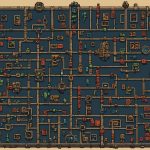Overview of Dell Precision 5820 Tower Capabilities
The Dell Precision 5820 Tower is a powerhouse designed for machine learning applications and high-performance computing tasks. It stands out due to its robust hardware specifications and impressive performance benchmarks. The tower supports a variety of high-end GPU options, crucial for efficient machine-learning processes. With the ability to incorporate multiple GPUs, the Dell Precision 5820 offers unparalleled computational power, elevating its status as a top choice for data-driven projects.
High-end GPUs play a pivotal role in machine learning, allowing complex computations to be executed swiftly, thereby reducing training times significantly. These GPUs facilitate parallel processing, enabling multiple tasks to be handled concurrently. The Dell Precision 5820 is compatible with top-of-the-line GPU models renowned for their computational prowess. Popular choices include NVIDIA’s Quadro and Tesla series, known for optimizing deep learning frameworks.
Have you seen this : Operational excellence of military surveillance drones
When selecting a GPU, compatibility with the Dell Precision 5820’s hardware configuration must be considered. The tower’s architecture is designed to accommodate sophisticated GPUs, ensuring seamless operation and minimal bottlenecks. Overall, the combination of robust hardware and versatile GPU options makes the Dell Precision 5820 an ideal machine for tackling intensive machine learning tasks with precision.
Preparing for GPU Installation
Before beginning the GPU installation preparation for your Dell Precision 5820, ensure you meet relevant system requirements and verify compatibility. Ensuring your chosen GPU model is supported prevents unnecessary frustrations. Begin by identifying supported GPU models. For the Dell Precision 5820, options abound, with robust models available that align with machine learning workloads.
Also to read : Fortifying Your Remote Workspace: Top Strategies to Leverage Ubiquiti Unifi Dream Machine for Maximum Security
Additionally, assess your device’s power supply and cooling capabilities, as high-performance GPUs demand substantial resources. Adequate power and cooling are essential to prevent overheating, which could lead to hardware failure. Don’t overlook verifying BIOS settings and updating firmware; these updates often resolve compatibility issues, providing smooth performance.
In assembling the right tools, a basic toolkit including screwdrivers and an anti-static wristband is vital for safely handling components. It’s crucial to follow safety precautions, including disconnecting power before beginning installation to avoid electrical hazards. Resources for technical support, such as forums and manufacturer helplines, offer additional assistance should problems arise during installation. Proper preparation ensures a seamless process, allowing you to harness full GPU capabilities promptly.
Step-by-Step GPU Installation Process
When setting up a Dell Precision 5820 Tower, proper GPU installation is crucial for optimal performance. This process involves several essential steps to ensure your machine is ready for high-performance tasks.
Opening the Dell Precision 5820 Tower
Case dismantling requires precision to avoid damaging components. Begin by powering off and unplugging the unit. Use anti-static precautions such as wristbands to prevent electrostatic discharge. Carefully remove the side panel, often secured with screws, for internal access.
Installing the GPU
Follow step-by-step instructions for a successful installation. Locate the GPU slot on the motherboard, ensuring it aligns with the card’s connectors. Secure the GPU using the provided screws and attach necessary power cables. Confirm all connections are firm and compatible with the tower’s specifications.
Closing the Case and Initial Setup
After installing the GPU, meticulously close the case, re-securing any screws removed earlier. Before powering on, double-check all connections and cables. Once satisfied, perform initial power-on checks and refer to troubleshooting tips for any startup issues. With these steps complete, your Dell Precision 5820 is ready to deliver powerful performance.
Optimizing GPU Performance for Machine Learning
Maximizing the performance of your GPU is essential when running machine learning models on the Dell Precision 5820. Ensuring you have the right software installation is the first step. It’s crucial to install recommended libraries, such as TensorFlow or PyTorch, and up-to-date GPU drivers to guarantee optimal functions. These installations enable the GPU to leverage its full potential, reducing computation times and enhancing efficiency.
Configuration Settings
Once the software is in place, focus on configuration settings tailored for machine learning. Optimal settings involve adjusting power management for sustained performance and tweaking thermal controls to prevent overheating during intensive tasks. Utilize monitoring tools like NVIDIA-SMI for real-time oversight, safeguarding against potential performance dips, allowing you to make informed adjustments swiftly.
Running Benchmark Tests
After enhancements, it’s wise to run benchmark tests to evaluate your GPU’s performance. Tools like Geekbench offer insights into the system’s capacities and highlight areas for further tuning. Analyzing these results can direct you to tweak system settings, ensuring your Dell Precision 5820 operates at peak efficiency, tailored specifically for demanding machine-learning tasks.
Troubleshooting Common Issues
Navigating GPU troubleshooting on the Dell Precision can be a straightforward process if approached methodically. Users often encounter installation issues such as improper fits or connection errors. It’s essential to verify that the GPU is seated correctly in its slot and that all cables are secure. Examine the power connectors, ensuring they are appropriate for your chosen GPU model.
Identifying Installation Problems
Common symptoms of installation failures include no display output or system crashes during boot. These often stem from hardware and software conflicts. Check for software compatibility and update drivers if necessary. Also, ensure that your BIOS is set to recognize the GPU as the primary display adapter.
Performance Issues
Underperformance can manifest as slow rendering speeds or stuttering during intensive tasks. Recognize these signs early to mitigate issues. It’s important not to overlook common pitfalls, such as inadequate power supply, which can throttle GPU performance. Ensure your PSU meets the recommended wattage for your GPU.
Seeking Help and Resources
Consider reaching out through forums and professional services if problems persist. Many users find solutions from community resources, while more serious issues might necessitate warranty services. Always keep your system and component documentation at hand for guidance during service requests.











